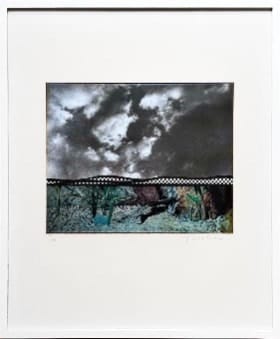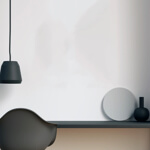-
Artworks
Roy Lichtenstein
Fish and Sky , 1967Screenprint on silver gellatin photographic print, mounted on three dimensional lenticular offset Lithograph, on white composition board with window mount24 3/8 x 20 7/8 in
62 x 53 cmEdition of 200Published by: Tanglewood Press, Inc, New York Reference: Mary Lee Corlett: “The prints of Roy Lichtenstein” (Catalogue Raisonne) Number 50 Bianchini (1971) Cat No 25 Zerner (1975) Cat No...Published by: Tanglewood Press, Inc, New York
Reference: Mary Lee Corlett: “The prints of Roy Lichtenstein” (Catalogue Raisonne) Number 50
Bianchini (1971) Cat No 25
Zerner (1975) Cat No 20
Note: The print is one of 10 works included in the portfolio “Ten from Leo Costelli”published form the 10th anniversary of the Leo Costelli Gallery. Contributing artists were: Lee Bontecou, Jasper Johns, Donald Judd, Roy Lichtenstein, Robert Morris, Larry Poons, Robert Rauchenburg, James Rosenquist, Frank Stellaic Colle and Andy WarholCertainly — here’s the cleaned-up version of Roy Lichtenstein’s 1967 overview without any symbols:
Roy Lichtenstein in 1967
In 1967, Roy Lichtenstein was at the height of his fame as a leading figure in the Pop Art movement, and the year marked a period of both creative expansion and major institutional recognition.
Artistic Output in 1967
1. Brushstrokes Series
In 1967, Lichtenstein continued exploring his “Brushstrokes” series, which he began in 1965. These works were ironic commentaries on Abstract Expressionism, mocking the gestural paint marks of artists like Pollock and de Kooning by rendering them in a flat, mechanical, comic-strip style.
Notable works include:
Brushstroke with Spatter
Yellow and Green Brushstrokes
Big Painting No. 6
2. Haystack and Cathedral Series (After Monet)
Lichtenstein began a conceptual project translating Impressionist motifs into Pop Art. He started working on versions of Claude Monet’s haystacks and Rouen Cathedral, reinterpreting them through his signature Ben-Day dots and hard-edged lines. These would culminate in a more complete series in 1968–69, but early studies and initial canvases were underway by 1967.
3. Continued Comic Book Aesthetic
He was still producing works that mimicked comic strips, using bold primary colors, heavy outlines, and Ben-Day dots to give the illusion of mechanical printing. However, he was beginning to move beyond direct comic-book references toward more conceptual and art-historical subjects.
Exhibitions and Recognition
1. Major Exhibitions
In 1967, Lichtenstein was included in high-profile international exhibitions. His fame, already cemented by his first solo show at Leo Castelli Gallery in 1962, continued to grow. His work was shown at documenta IV in Kassel, Germany (1968), but preparations and curatorial planning involving his work occurred in 1967.
2. Printmaking
Lichtenstein produced many important prints in 1967, a medium he was increasingly embracing. He worked with several major print studios, including pieces in his Brushstroke and Explosion themes. The combination of fine art and commercial printing techniques was central to his Pop Art ethos.
Studio Practice and Development
By 1967, Lichtenstein had firmly established his studio practice in New York, working systematically and meticulously to mimic the impersonal feel of mass reproduction. He was experimenting with screenprinting, modular compositions, and sculptural works, including early forays into three-dimensional interpretations of his flat paintings.
Join our mailing list
* denotes required fields
We will process the personal data you have supplied to communicate with you in accordance with our Privacy Policy. You can unsubscribe or change your preferences at any time by clicking the link in our emails.




